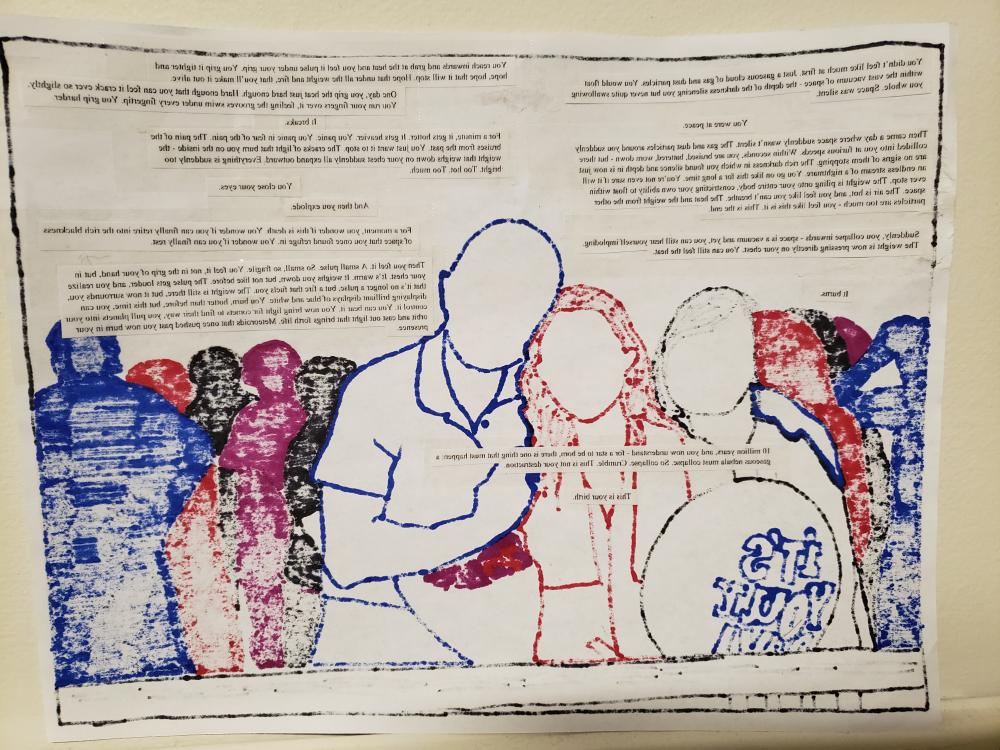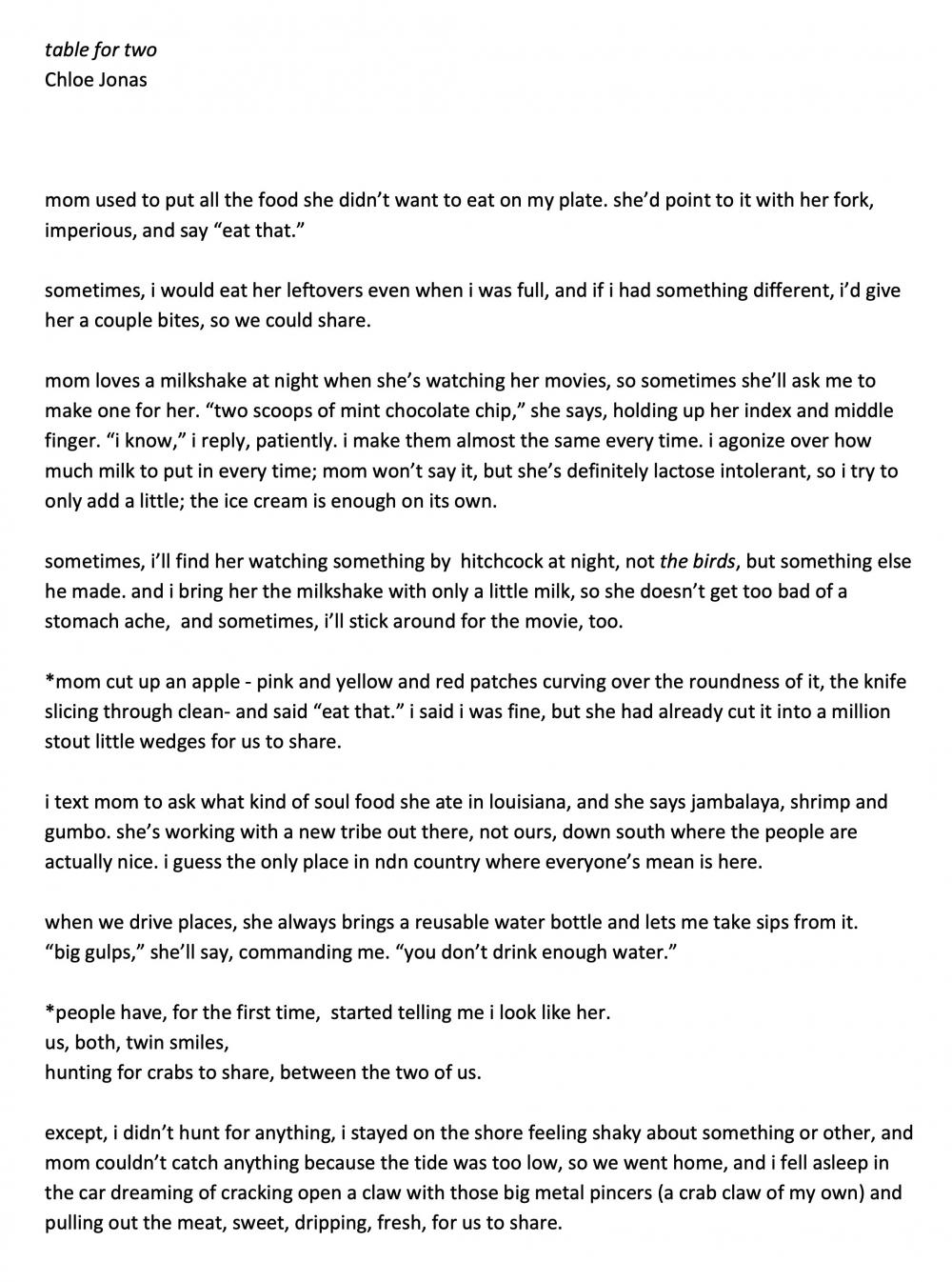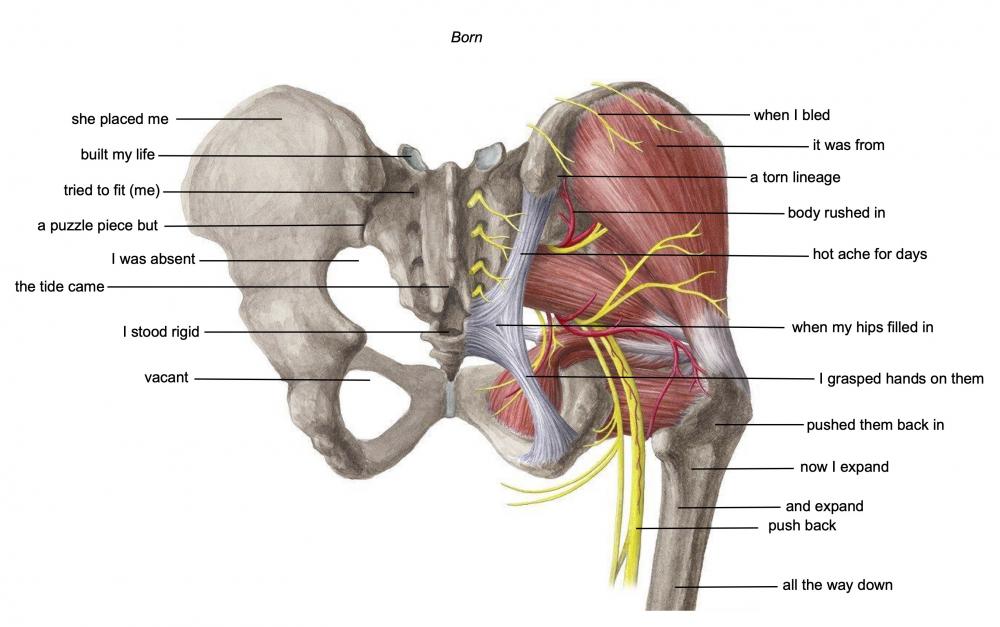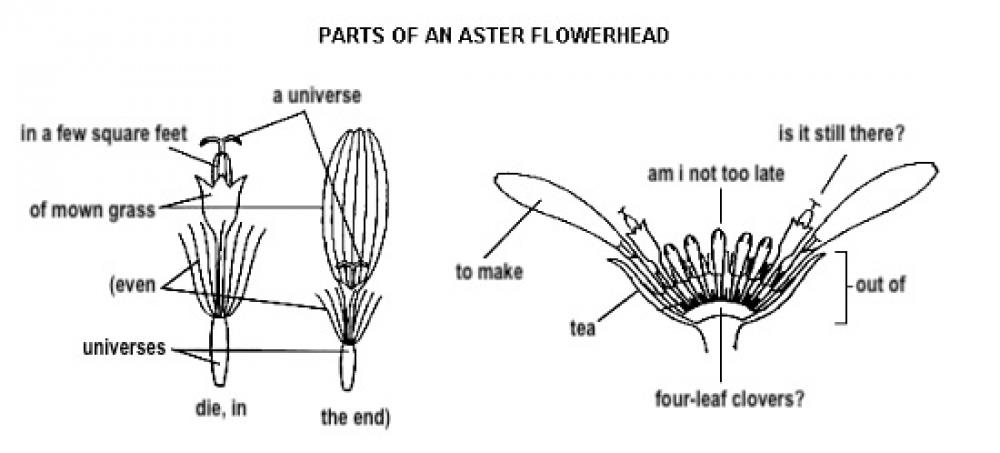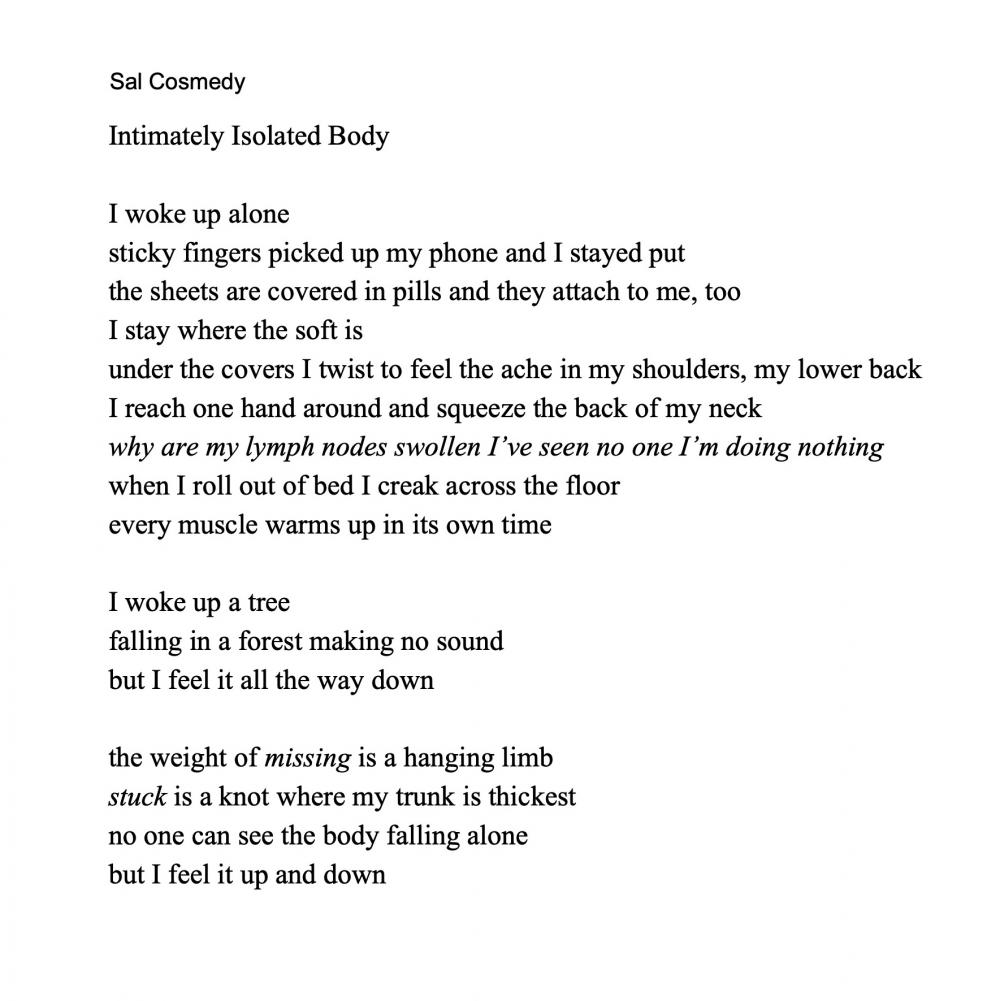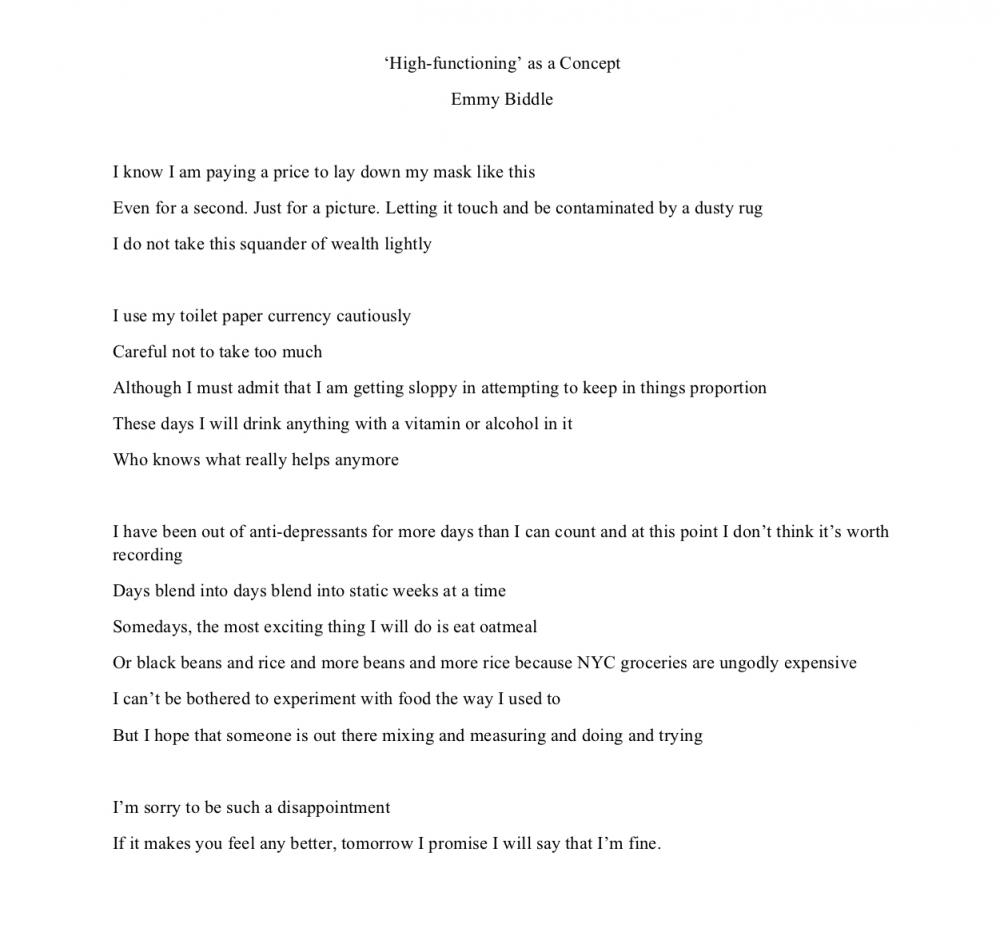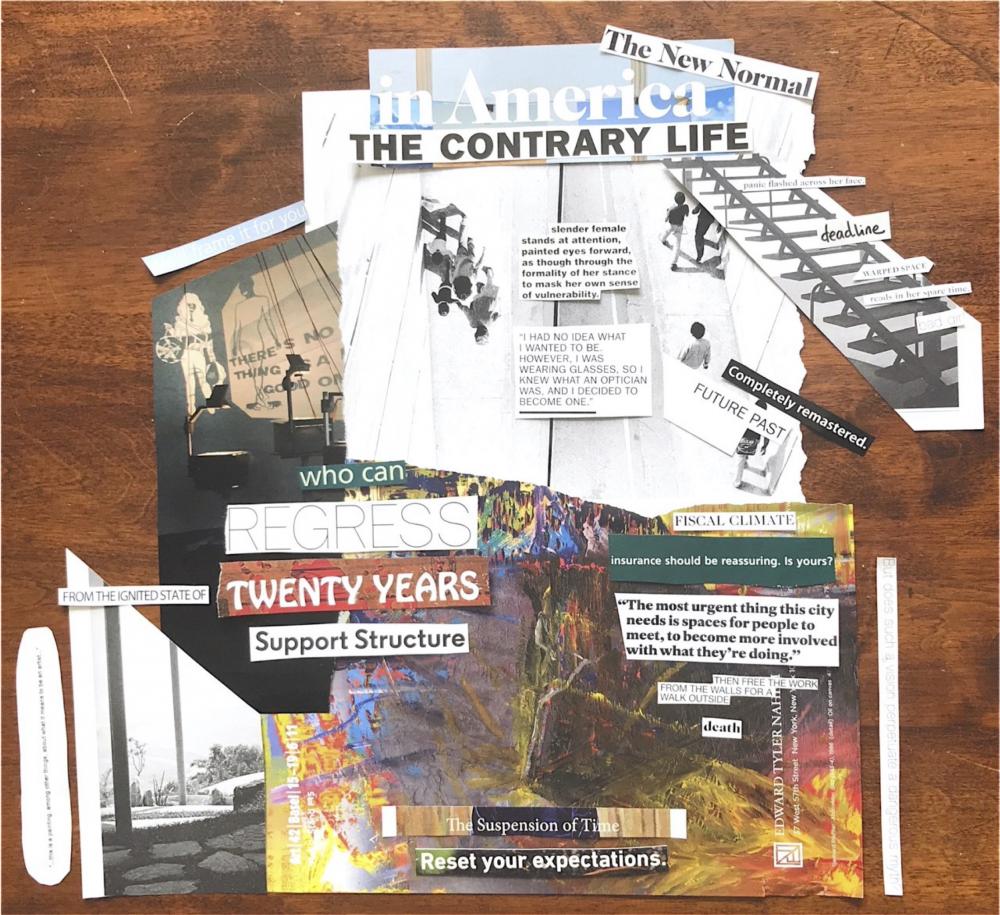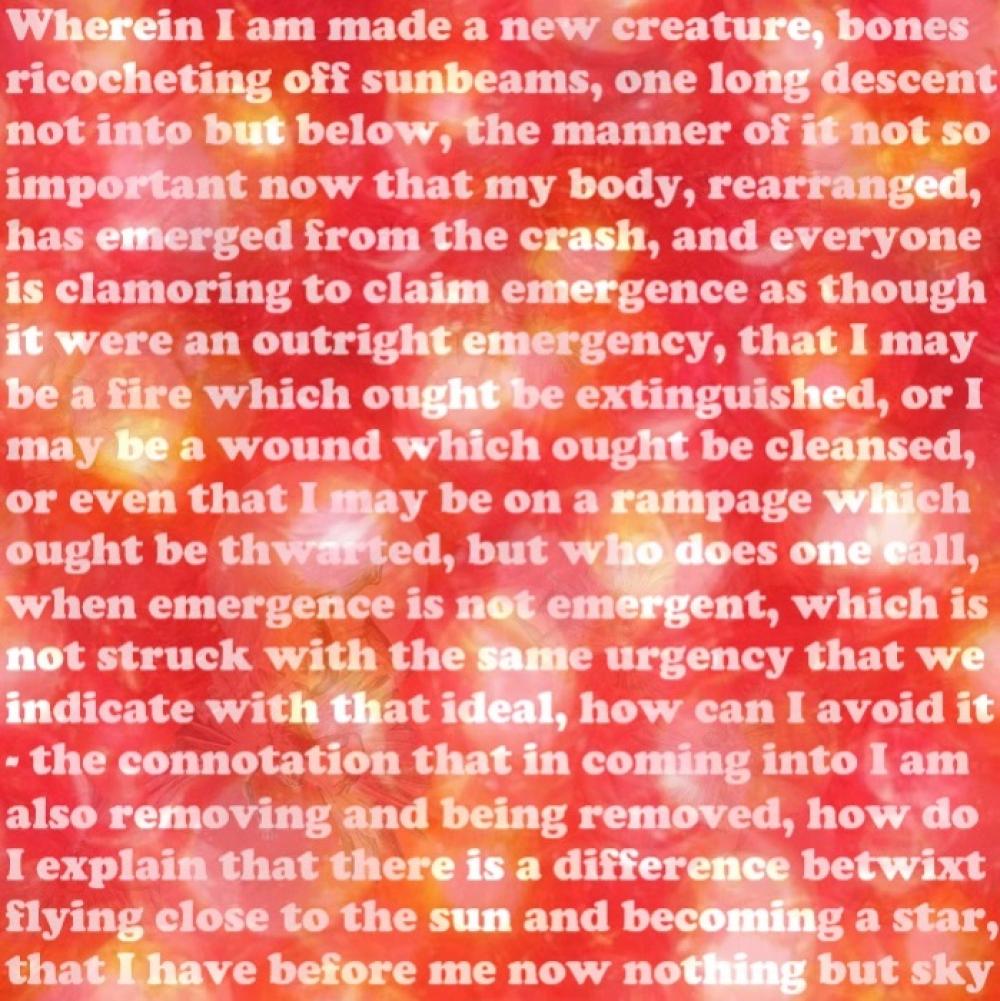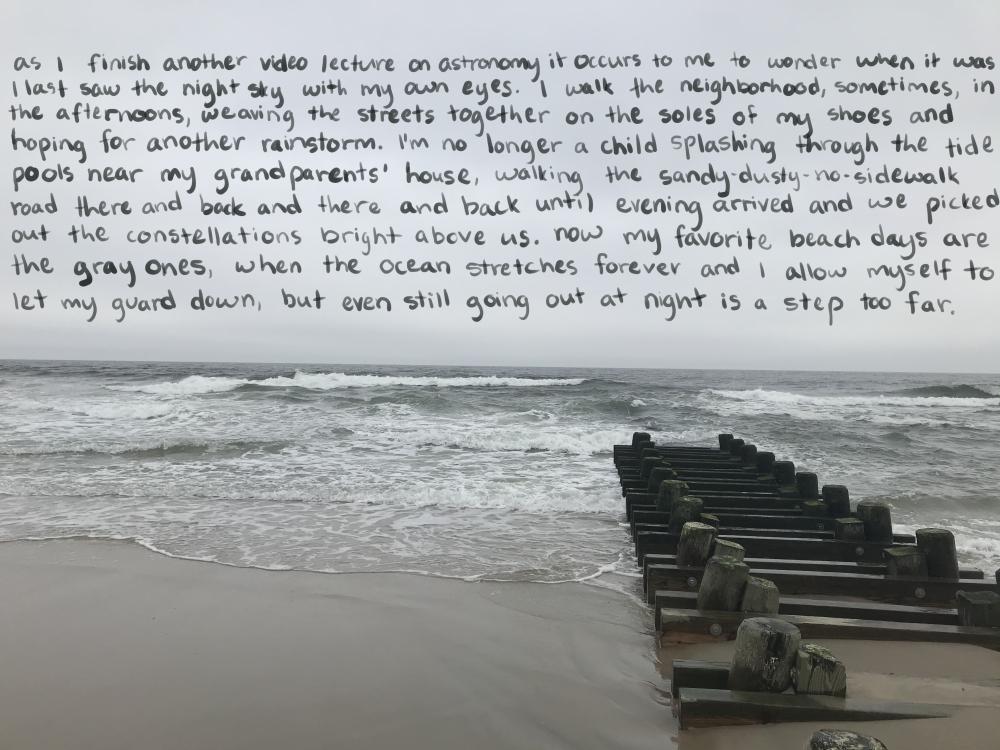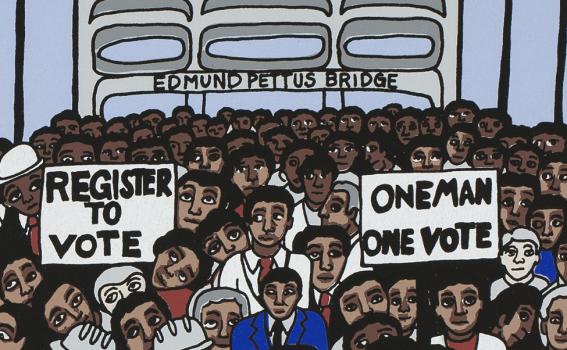Poetry and the Image: Formations of Identity
Virtual exhibition created by students in "English 361: Poetry & The Image: Formations of Identity" taught by Samuel Ace, Visiting Lecturer in English, Spring 2020
In collaboration with Ellen Alvord and Kendra Weisbin
Designed by Nina Frank
emmybiddle20qurantine_0.jpg
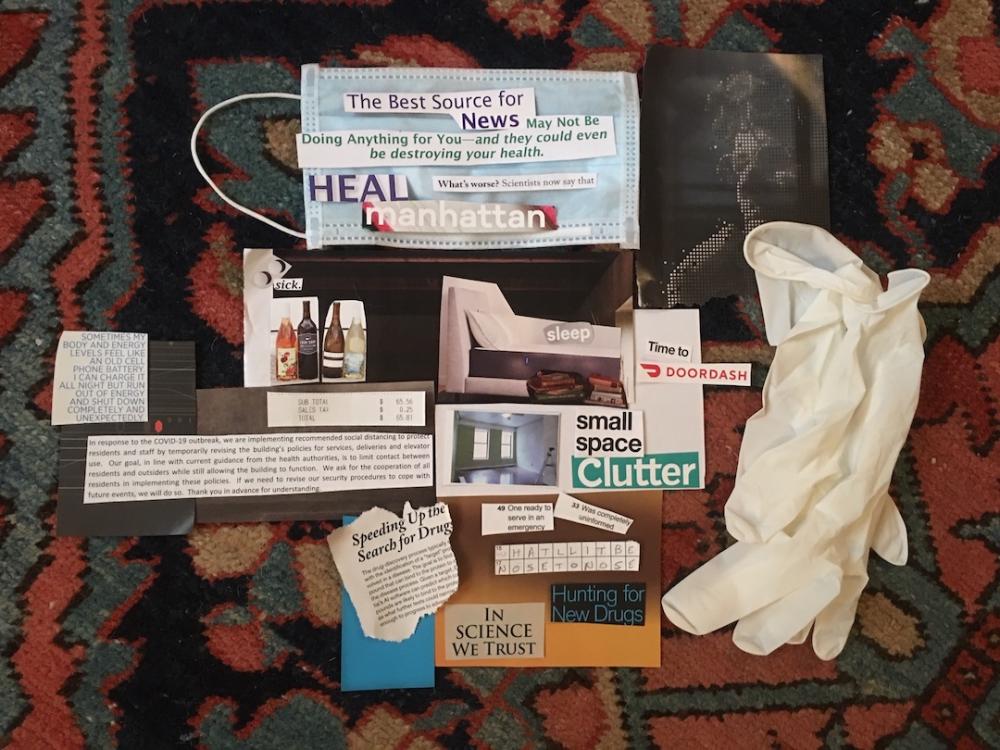
Emmy Biddle '20
INTRODUCTION
Earlier this spring, inspired by the work my students were doing in my advanced poetry writing seminar, "Poetry & The Image: Formations of Identity," I approached Museum staff to suggest a pop-up exhibition of student work. Although our nascent plans came to a halt because of the pandemic-caused campus evacuation, I am extremely grateful that we have been able to rekindle the pop-up idea through this virtual exhibition.
With an emphasis on producing creative texts, our class sought to examine the parallel and often overlapping impulses of poem-making and image-making. From emoji to Instagram, line drawings to collage, video to altered photographs, visual images have burst through the boundaries of text-based poetry in the work of many contemporary writers and artists.
Although the class focused on generating creative work, we also did a great deal of reading and looking. The monographs we read were The War of the Foxes by Richard Siken, Ghost Of by Diana Khoi Nguyen, Citizen by Claudia Rankine, Silent Anatomies by Monica Ong, Voyage of the Sable Venus by Robin Coste Lewis, and finally Fragile Sister by Karen Green. We also looked at supplemental material by artists and writers as varied as Glenn Ligon, Douglas Kearney, Alison Bechdel, Robert Seidel, Jen Bervin, Sophie Calle, Anne Carson, Renee Gladman, Lorna Simpson, Diane Rosenblum, Jenny Holzer, William Kentridge, Faith Ringgold, Ed Ruscha, Barbara Kruger, Craig Santos Perez, Cecilia Vicuña, Maggie Nelson, Carrie Mae Weems, Cindy Sherman, Kara Walker, David Wojnarowicz, and many others. Several pieces shown in this exhibition are responses by students to the text/image work explored in our class.
As we moved to an online class and students found themselves enduring great disruption to their lives, many students chose to create work that directly engages their current circumstances. Along with our weekly check-ins, discussions, and one-on-one meetings, the creative work produced by the class has provided a necessary grounding, and I continue to be proud of the astounding work students have created throughout the semester.
Samuel Ace
Visiting Lecturer in English
Creative Project 1: Ghost of
Our first assignment focused on Diana Khoi Nguyen’s Ghost Of, a volume exploring family and her brother’s suicide through text and collage. We were fortunate to have had Diana visit our class via Zoom to talk about her work. Inspired by the book, students worked on copies of their own family photographs, writing into spaces that they felt contained silences, secrets, or things unsaid.
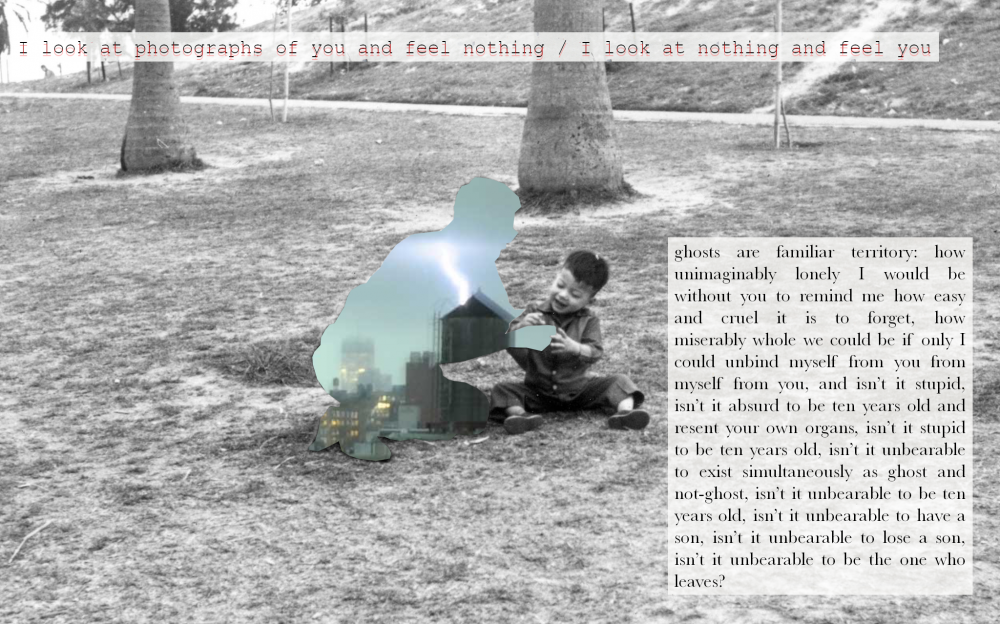

Alicia Kwok '21 Leo Rachman '20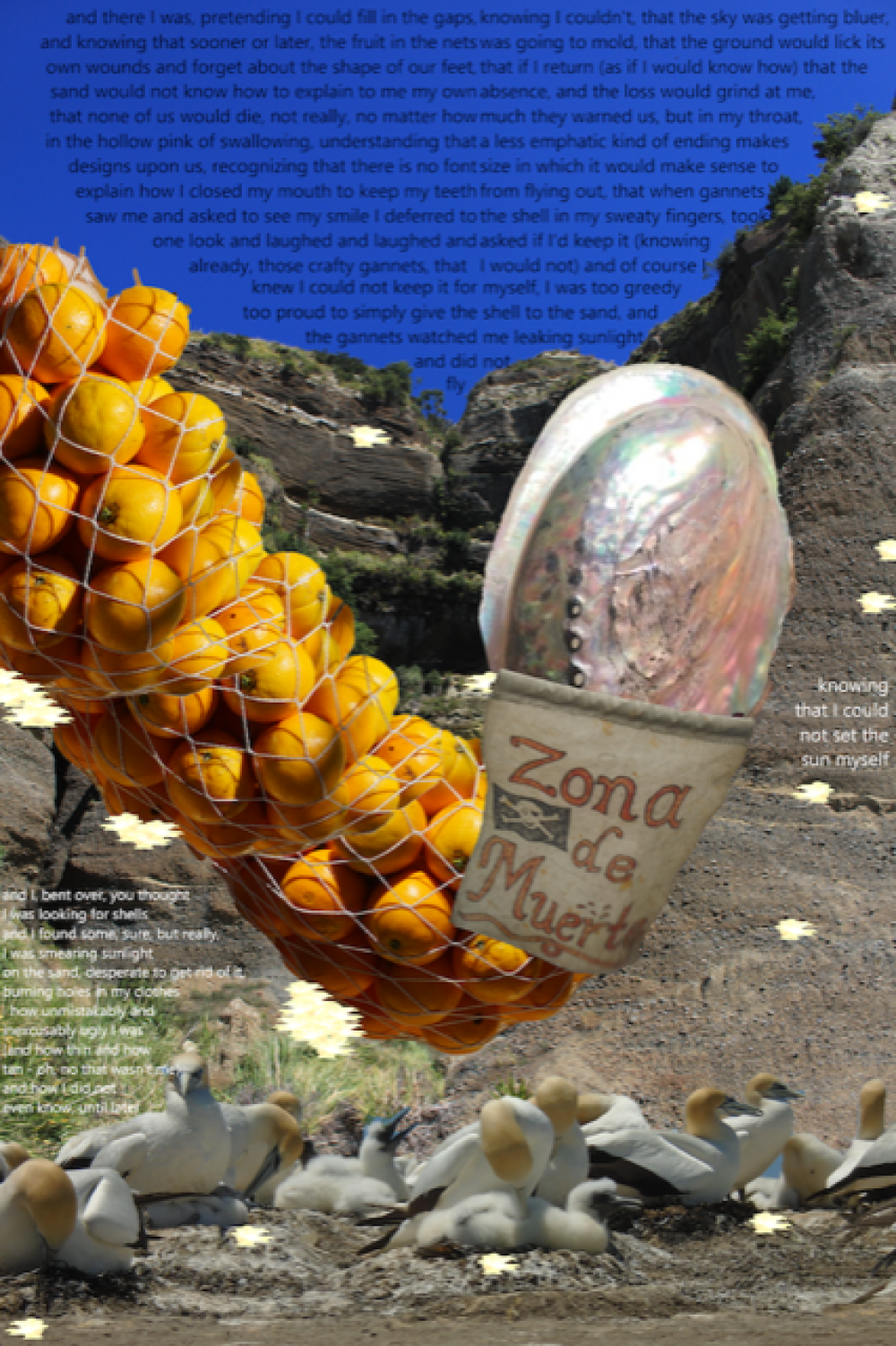

Mia Sigler '20 Sarah Donnelly '21
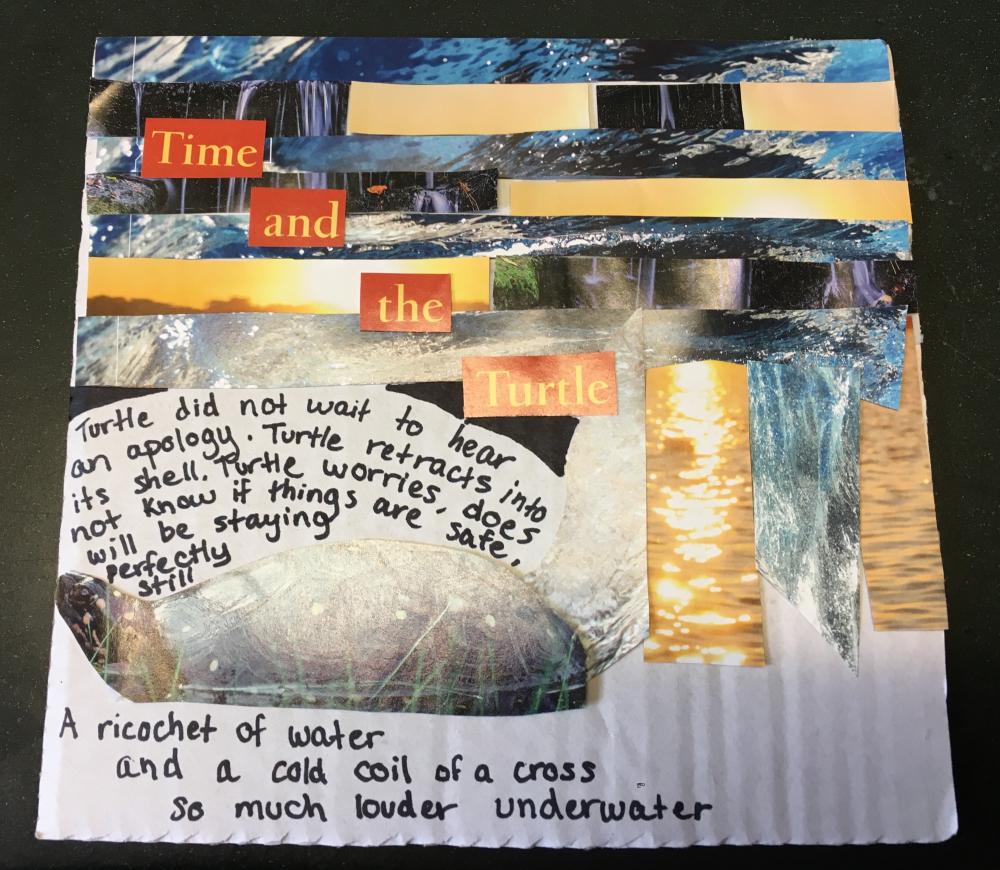
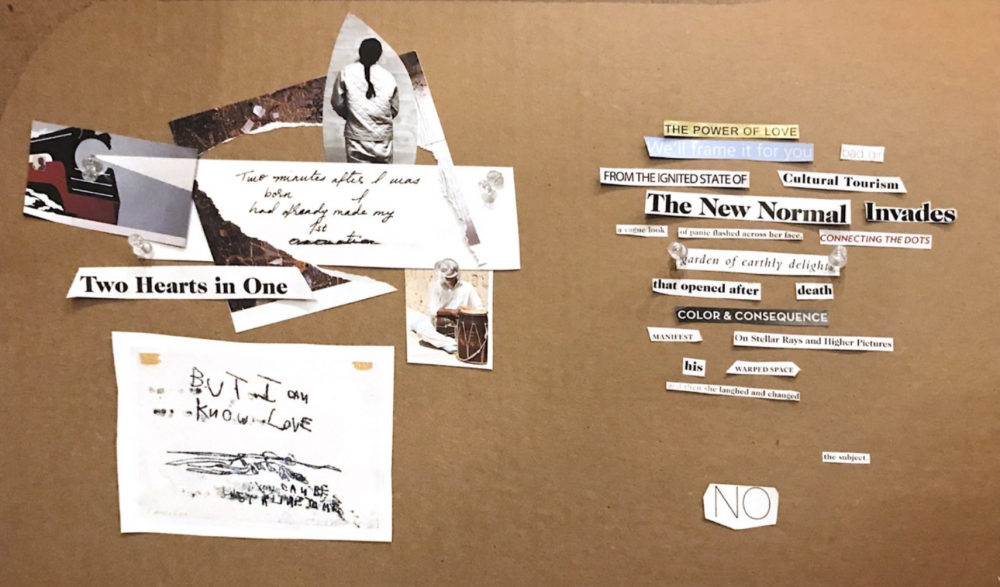
Sal Cosmedy '20 Mahmuda Alam '20
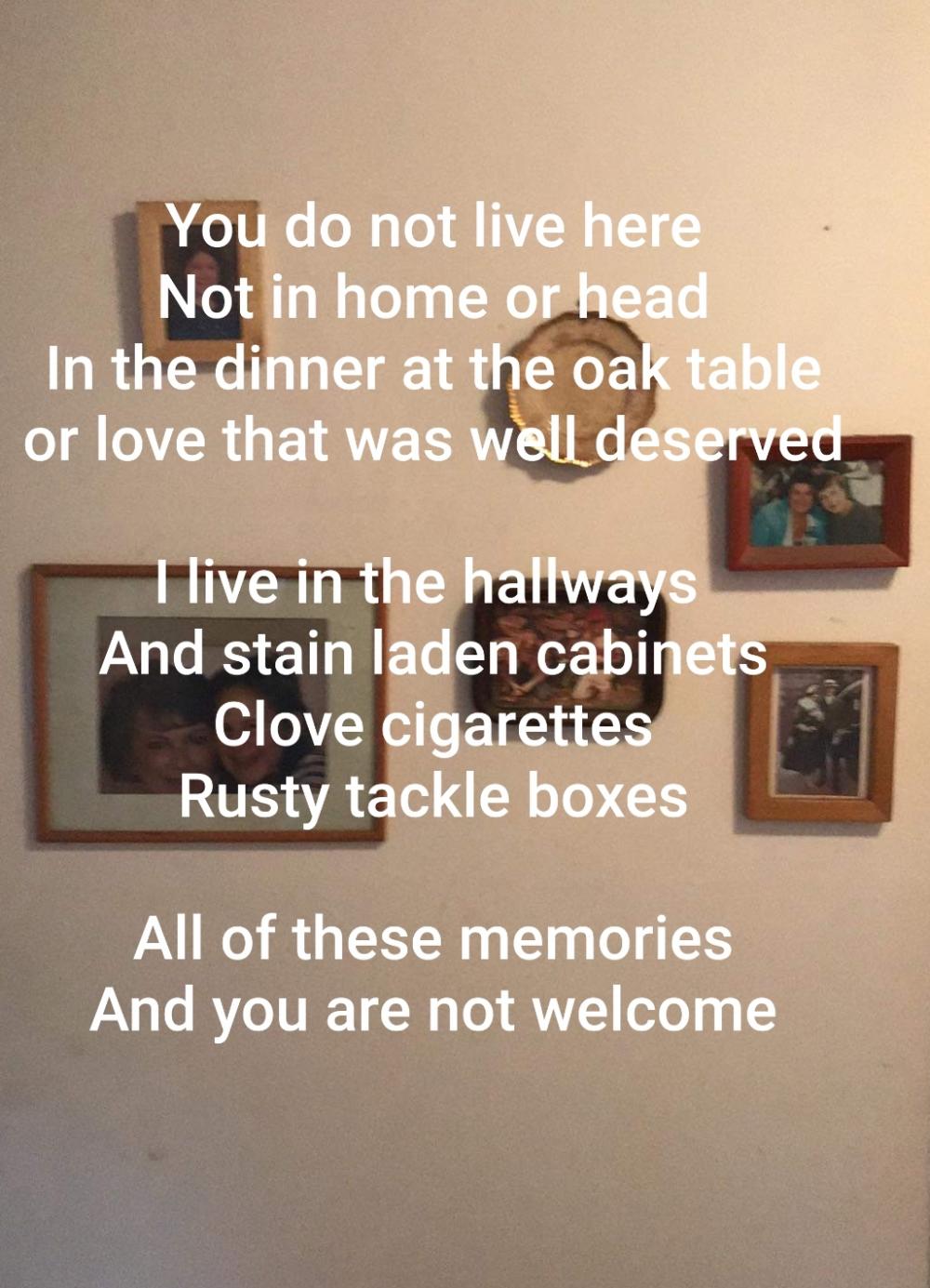
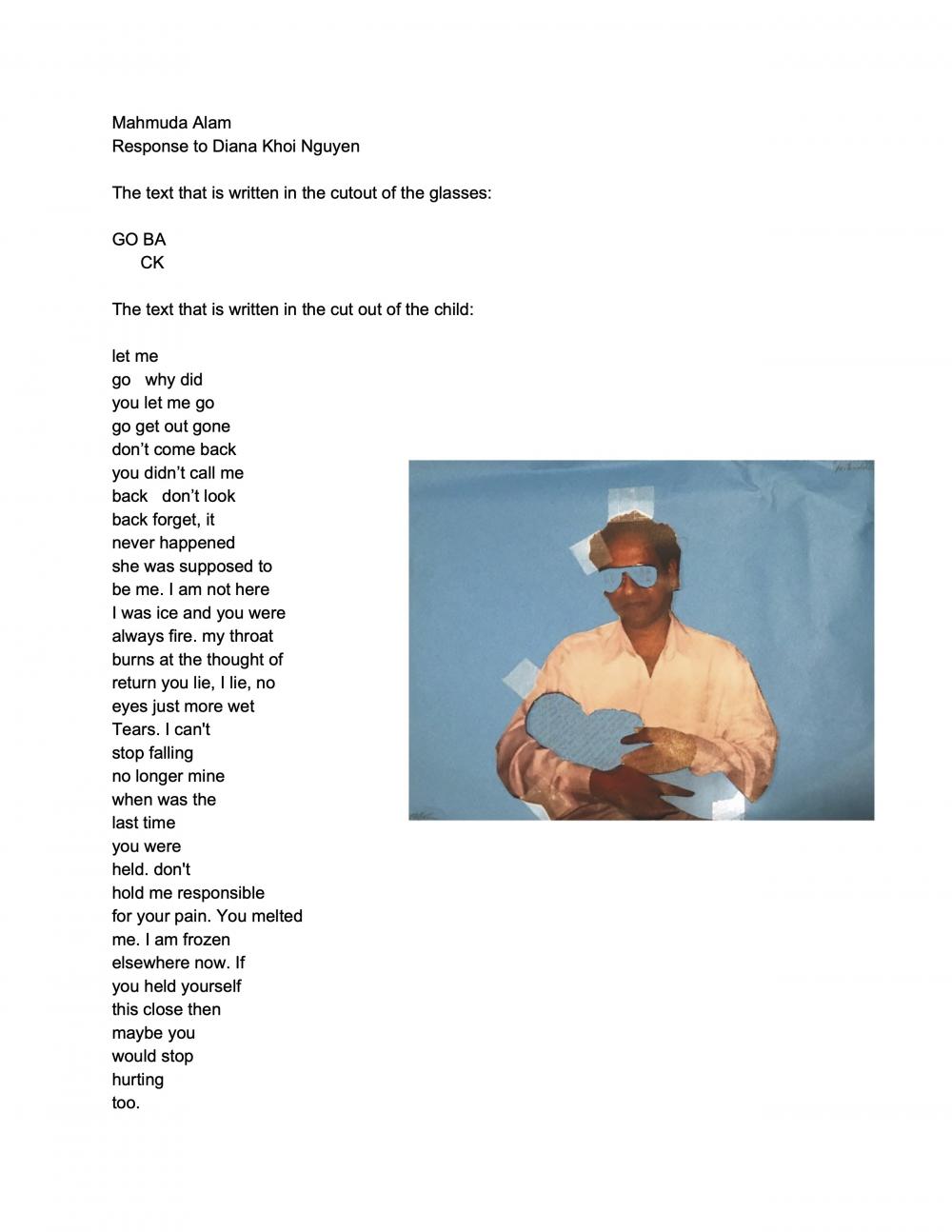
Chelsea Carlson '21 Mahmuda Alam '20
Creative Project 2: Silent Anatomies
Next we read Monica Ong’s Silent Anatomies, which “investigates cultural silences that shape the medical-emotional landscape of family diaspora, extending from China to the Philippines and North America. Her collection of image-poems juxtaposes diagram and diary, bearing witness to underrepresented histories of the body. Created as an assemblage of poetry, archive, and medical ephemera, it unpacks silence not only as the absence of language, but also as historical erasure, the loss of cultural memory, reconstructed truths, and ghosted identities.” Inspired by the graphic complexity of the book, students created work using image and text to explore personal and family histories.

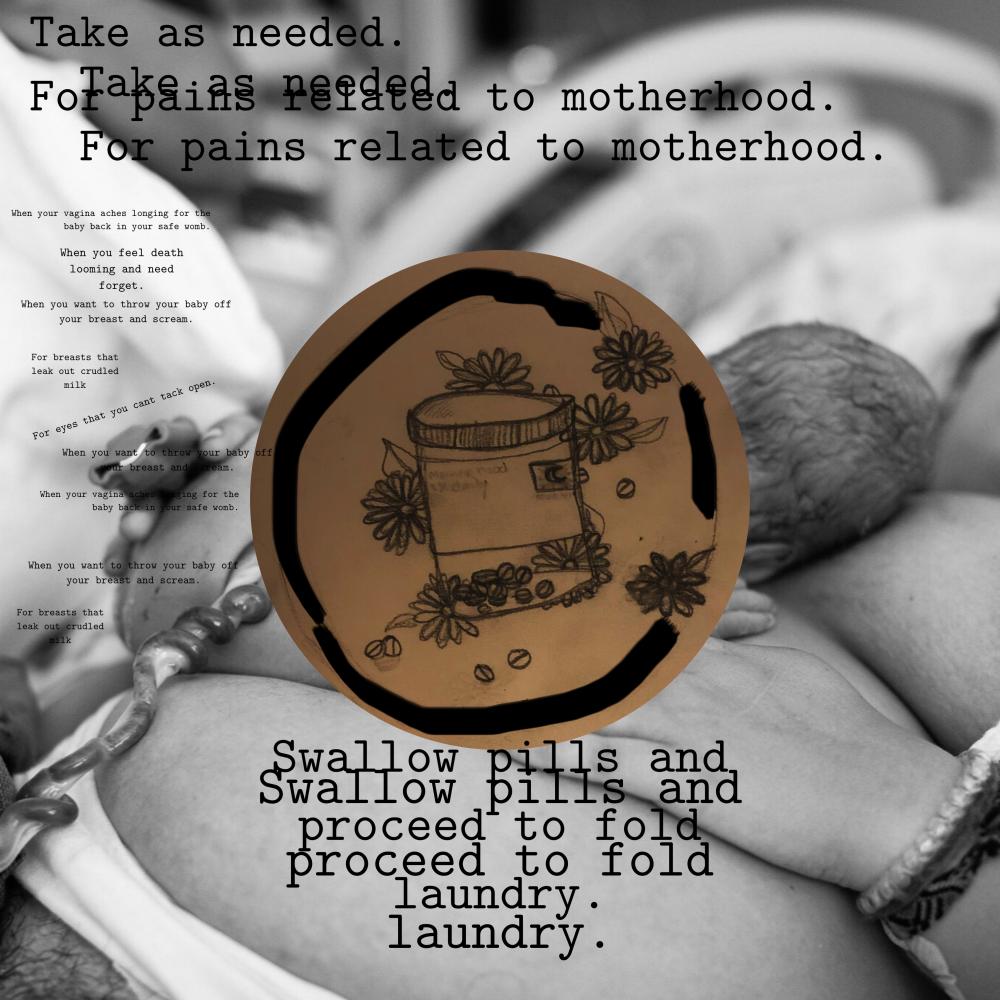
Mia Sigler '20 Jasmine Errico '21
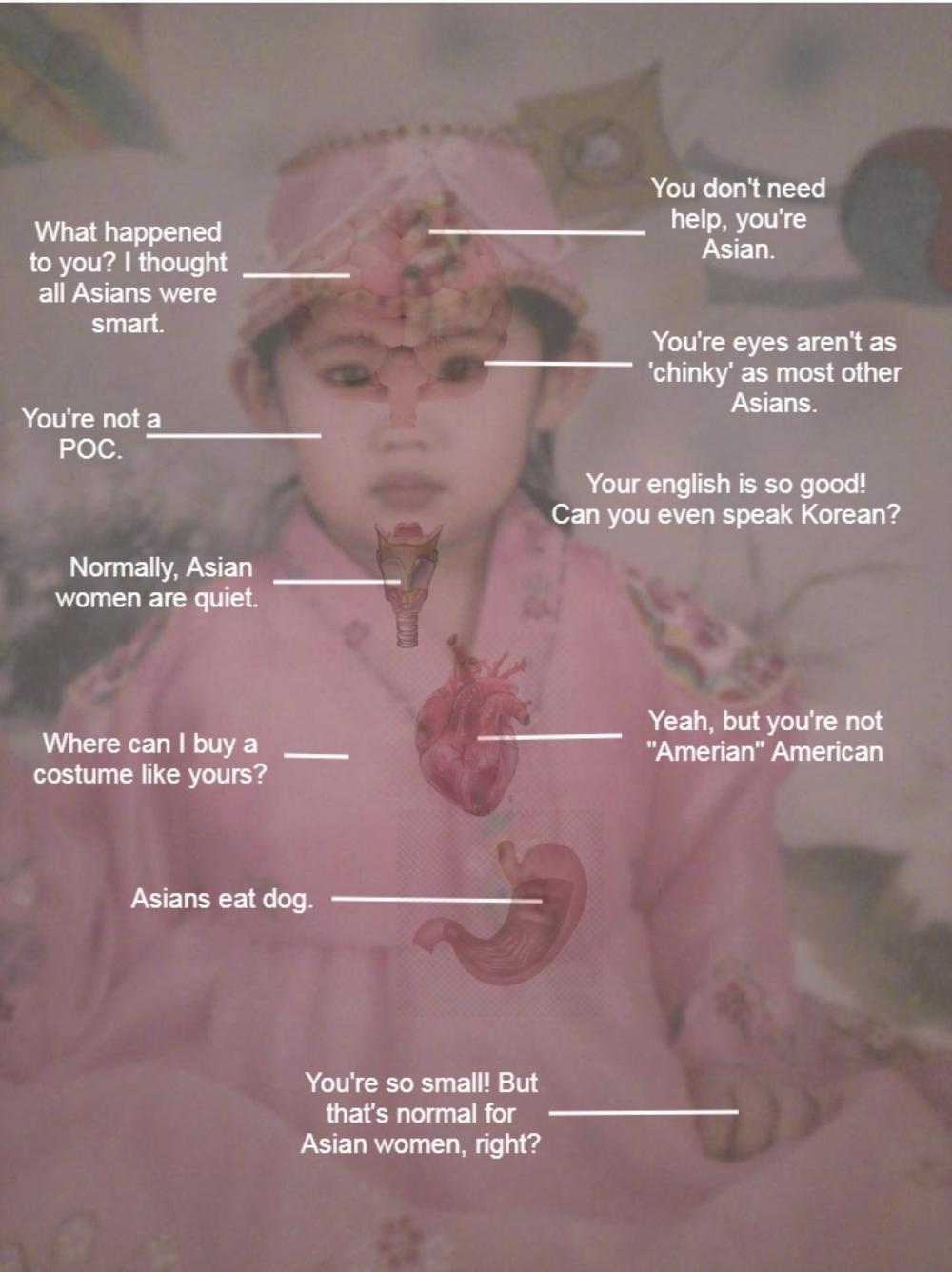

Jenny Cho '20 Arden Hegberg '20


Leo Rachman '20 Alicia Kwok '21


Emmy Biddle '20 Ale Cabezas '21
Creative Project 3: Museum
After spending time in the Museum with a selection of artworks, students followed these directions to produce texts and images: 1) note everything you observe about the physical attributes of each artwork, including color, rhythm, sound, energy, and visual details; and 2) take notes about each character in the image, and then create an imaginary character sketch that includes what those characters are doing, thinking, and the relationships amongst each other.
Students were also asked to consider the narrative composition of each artwork. How did the artist organize the space? Does each artwork contain a narrative? If so, is the organization of the narrative linear, or not? What are the patterns? Repetitions? Does the image read vertical or horizontal? Is it spread out or compressed? Areas of light and dark? What elements are grouped together, which ones stand on their own? Are there areas of chaos and areas of rest? How do your eyes move through the composition?
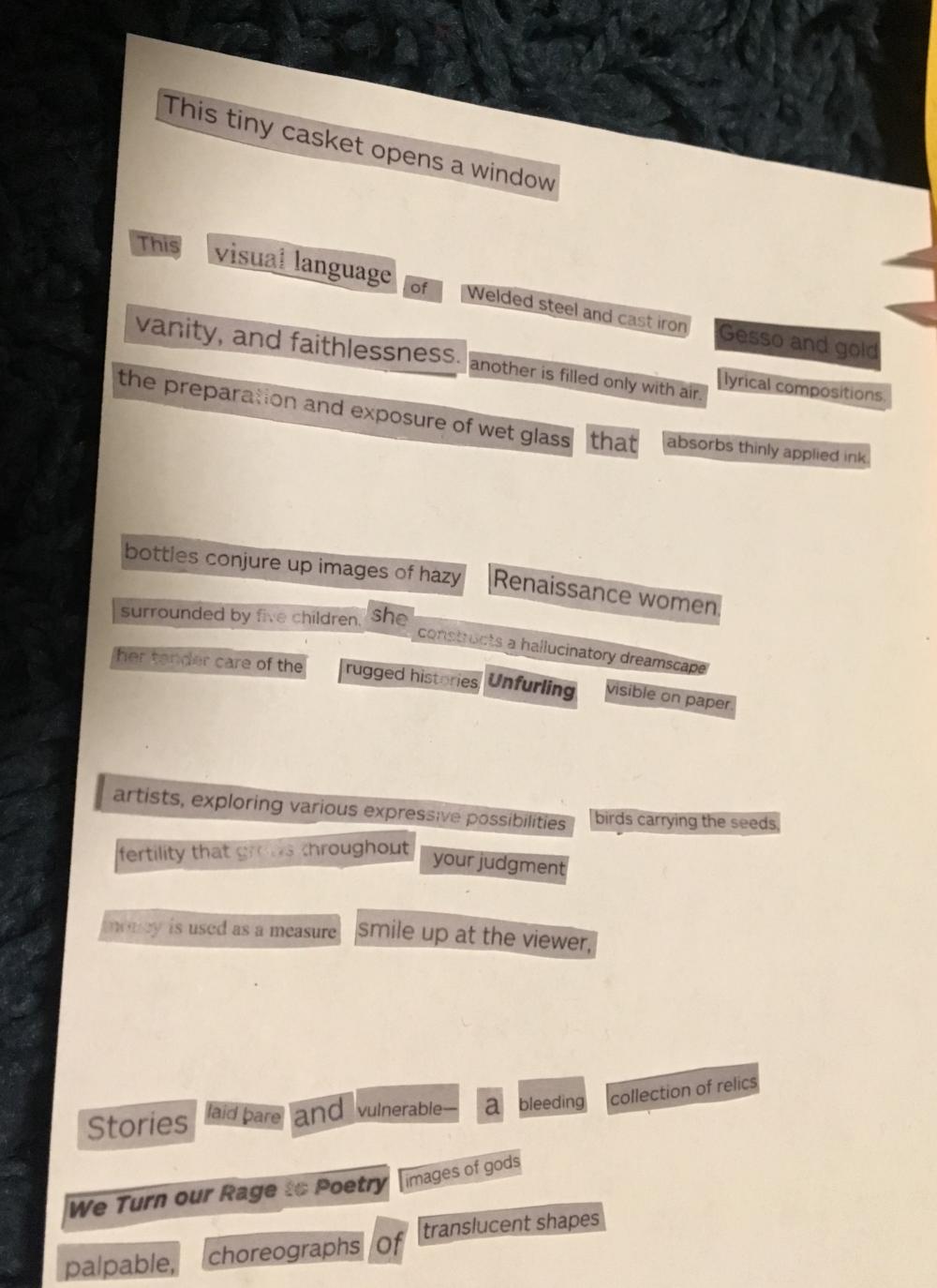
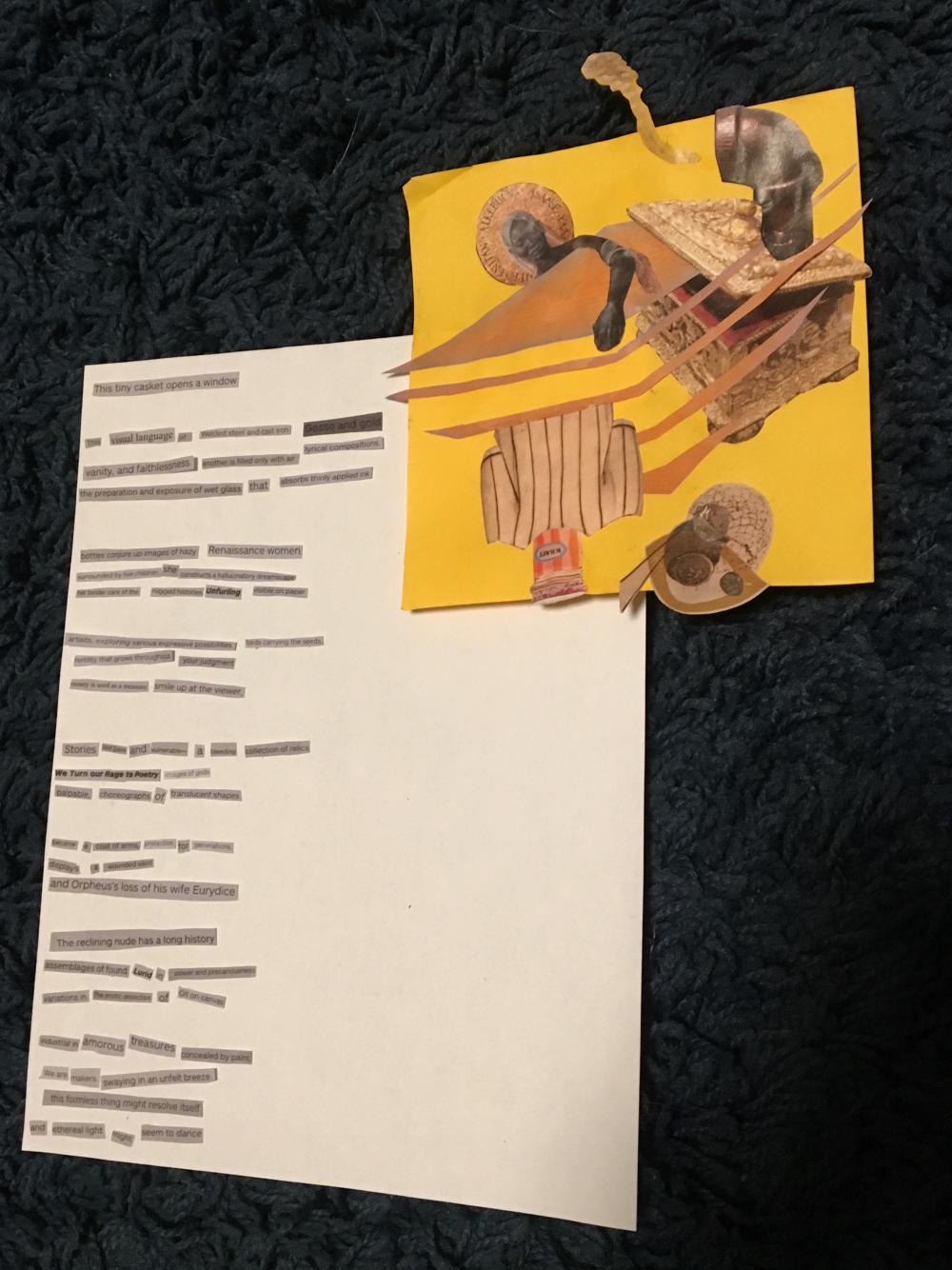

Arden Hegberg '20 with inspiration from Harvest by Harmonia Rosales
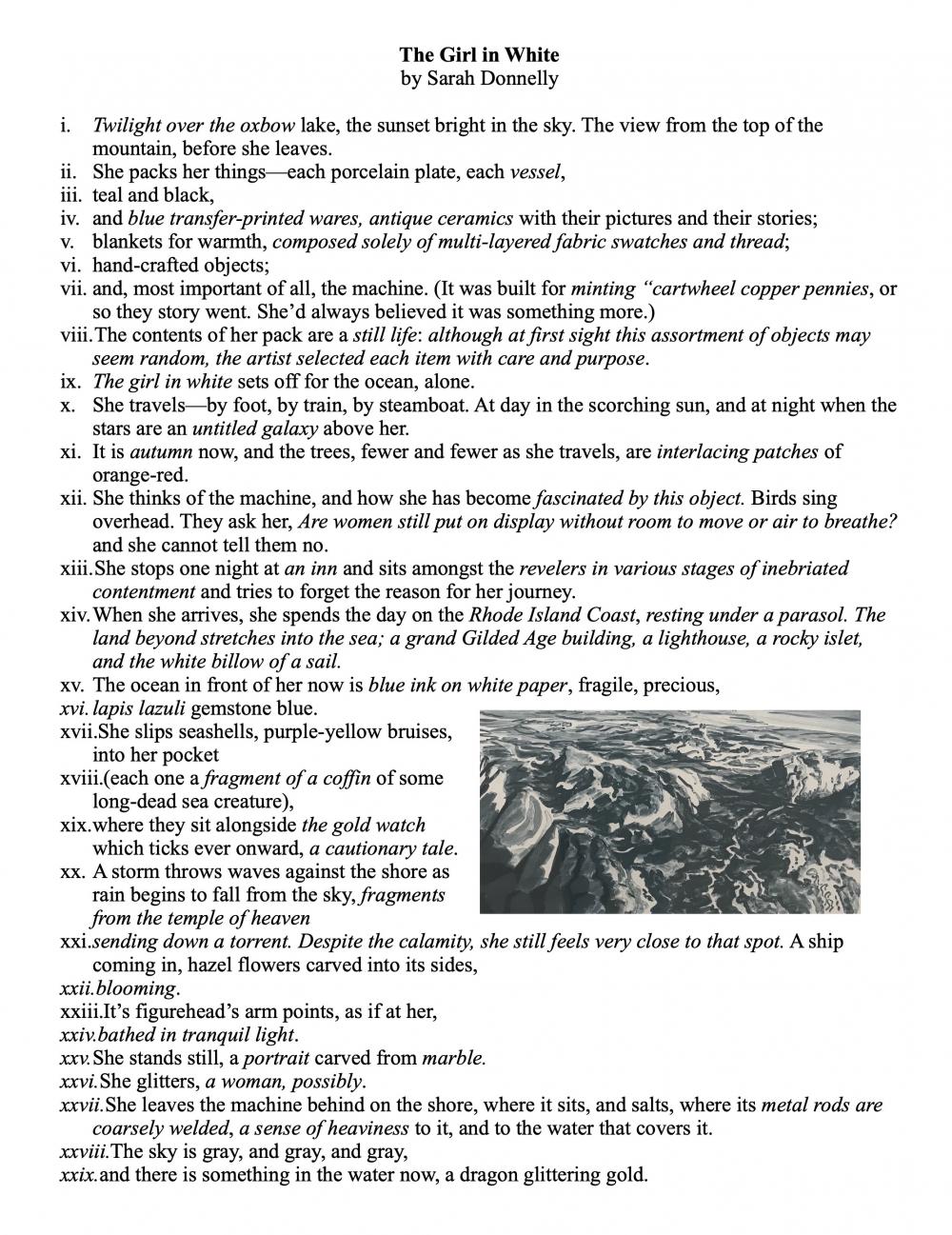
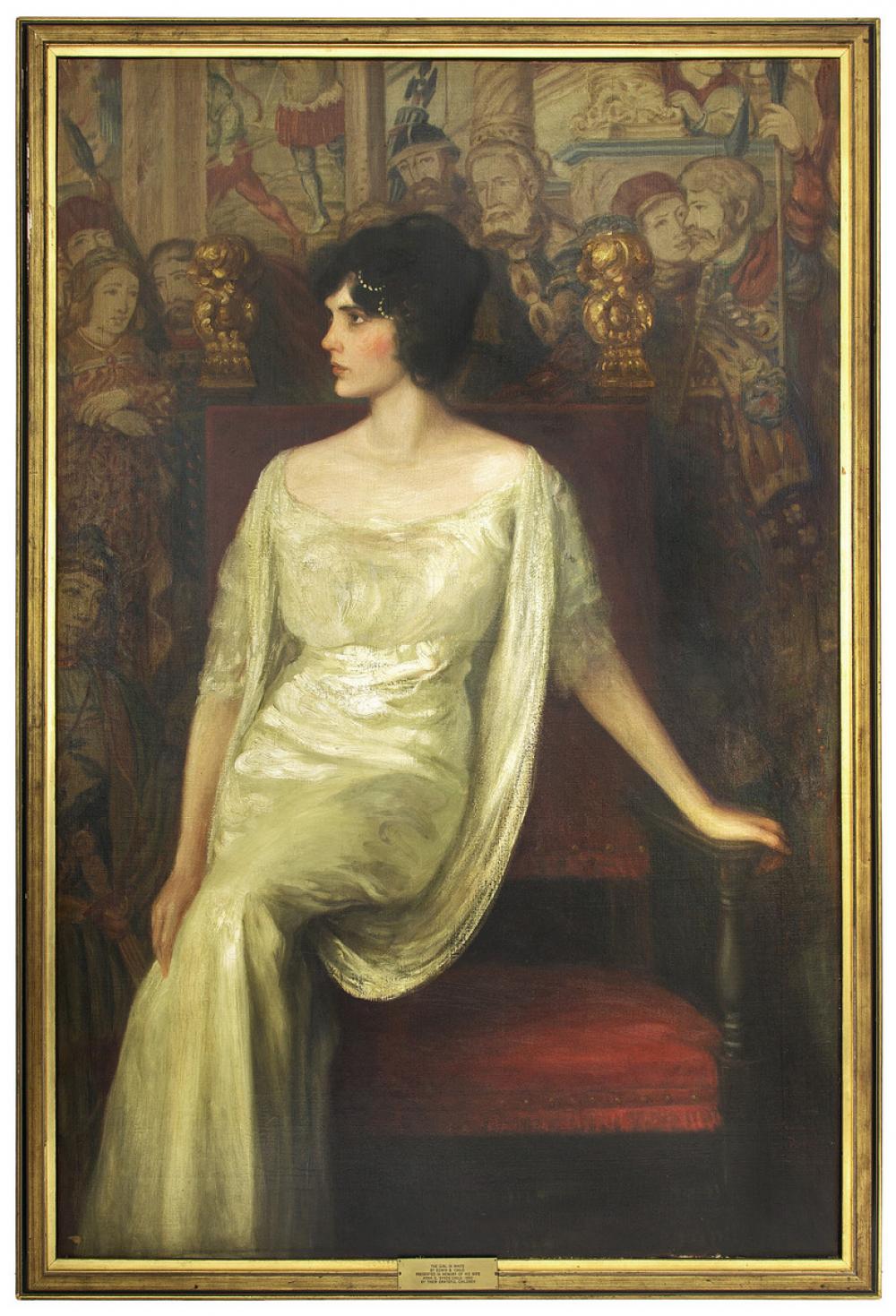
Sarah Donnelly '21 with inspiration from The Girl in White by Edwin Child
Creative Project 4: Reliquaries
During a Museum visit guided by Associate Curator of Education Kendra Weisbin, students spent time with the newly acquired AIDS Museum: Reliquarium (1999) by Barton Lidice Benes. The work is a part of a larger series, about which he wrote: “On a personal level, my reliquaries are a way of documenting the lives of my friends. Because of AIDS, there is a strong element of remembrance in my work. We all have things that only we know are relics. Without the stories, these objects mean nothing, but when they are mounted they become special. And…when they are combined with many more similar objects in a collection, they become art. Alone they’re simply memories—placed together, in the right order, the objects create a visually interesting museum that reads like a book or a musical composition.” After examining this remarkable piece in depth at the Museum, students worked on their own personal reliquaries.
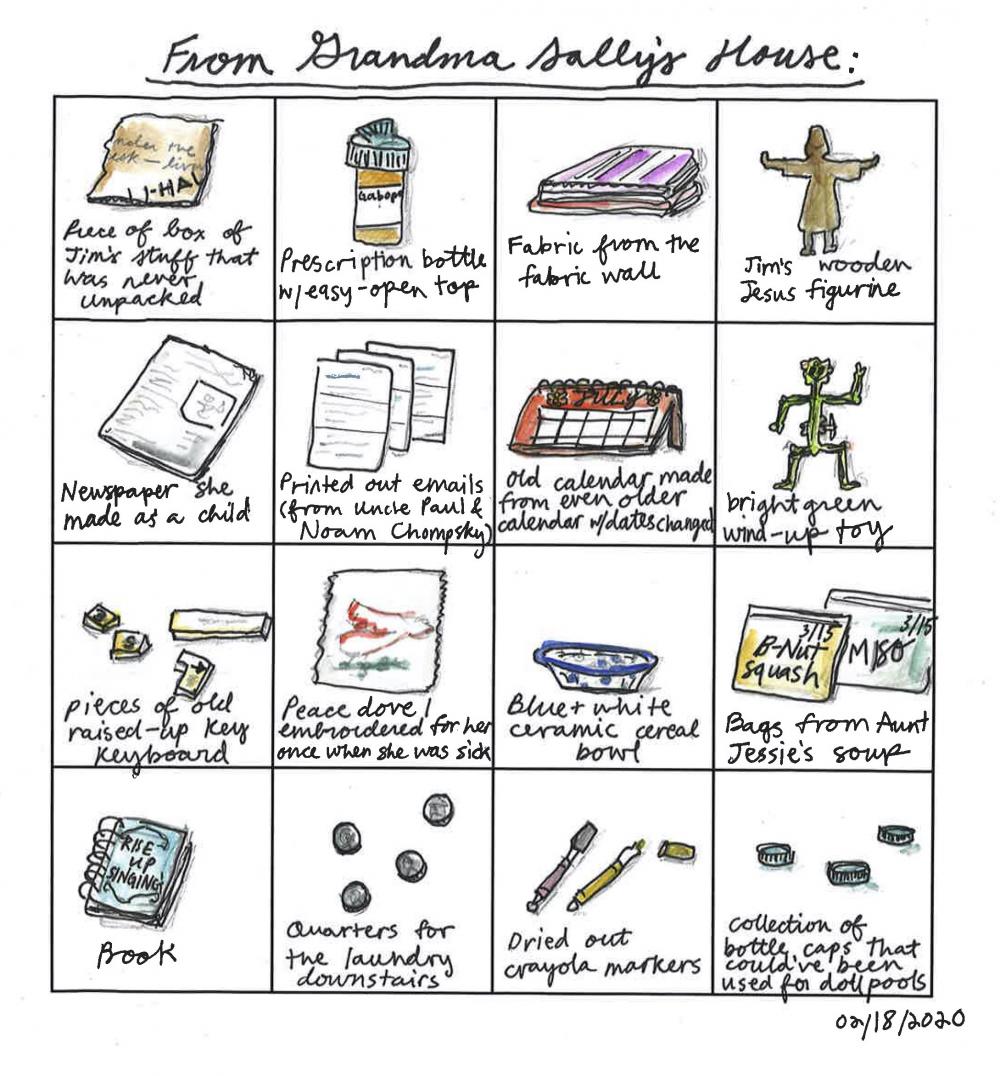
Lauren Modic-Doyle '20 Arden Hegberg '20


Jasmine Errico '21 Alicia Kwok '21
Creative Project 5: Maps
John Pluecker, poet, translator, and visual artist, and author of Ford Over was able to visit our class virtually in February. In Ford Over, Pluecker uses “language drawn from the multilingual chronicles of explorers / colonial agents who traveled through the land now known as the state of Texas. At the heart of the book is the mystery of the physical act of crossing a river.” Inspired by image/text poems based on historical or made-up maps, students created their own maps using image and text.

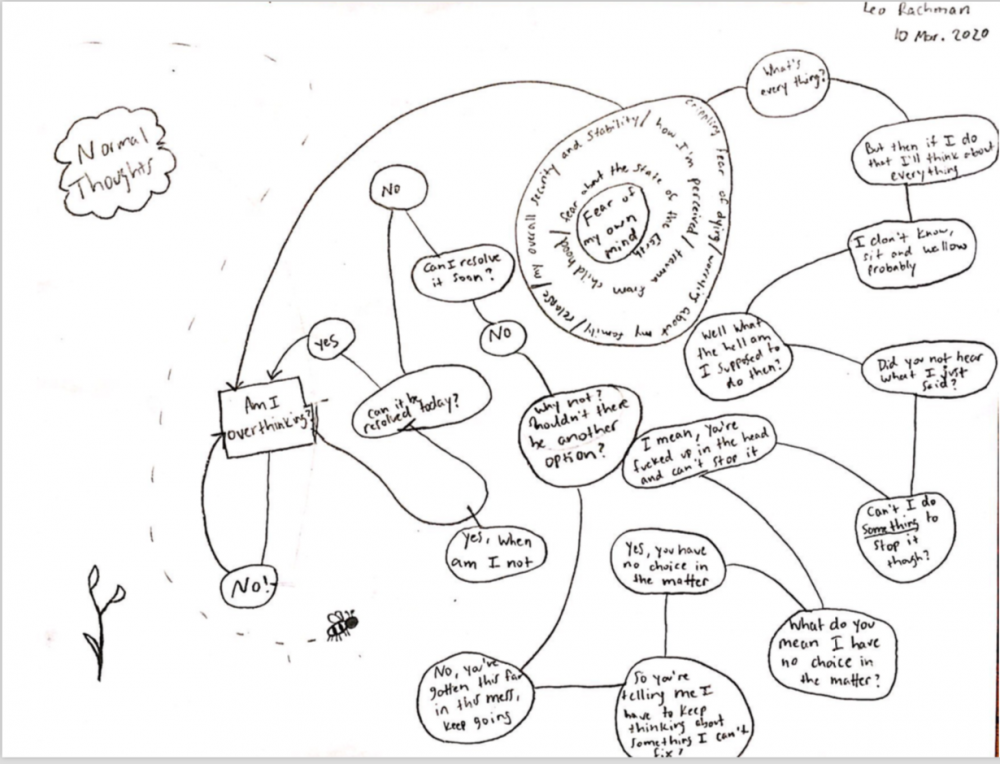
Sarah Donnelly '21 Leo Rachman '20
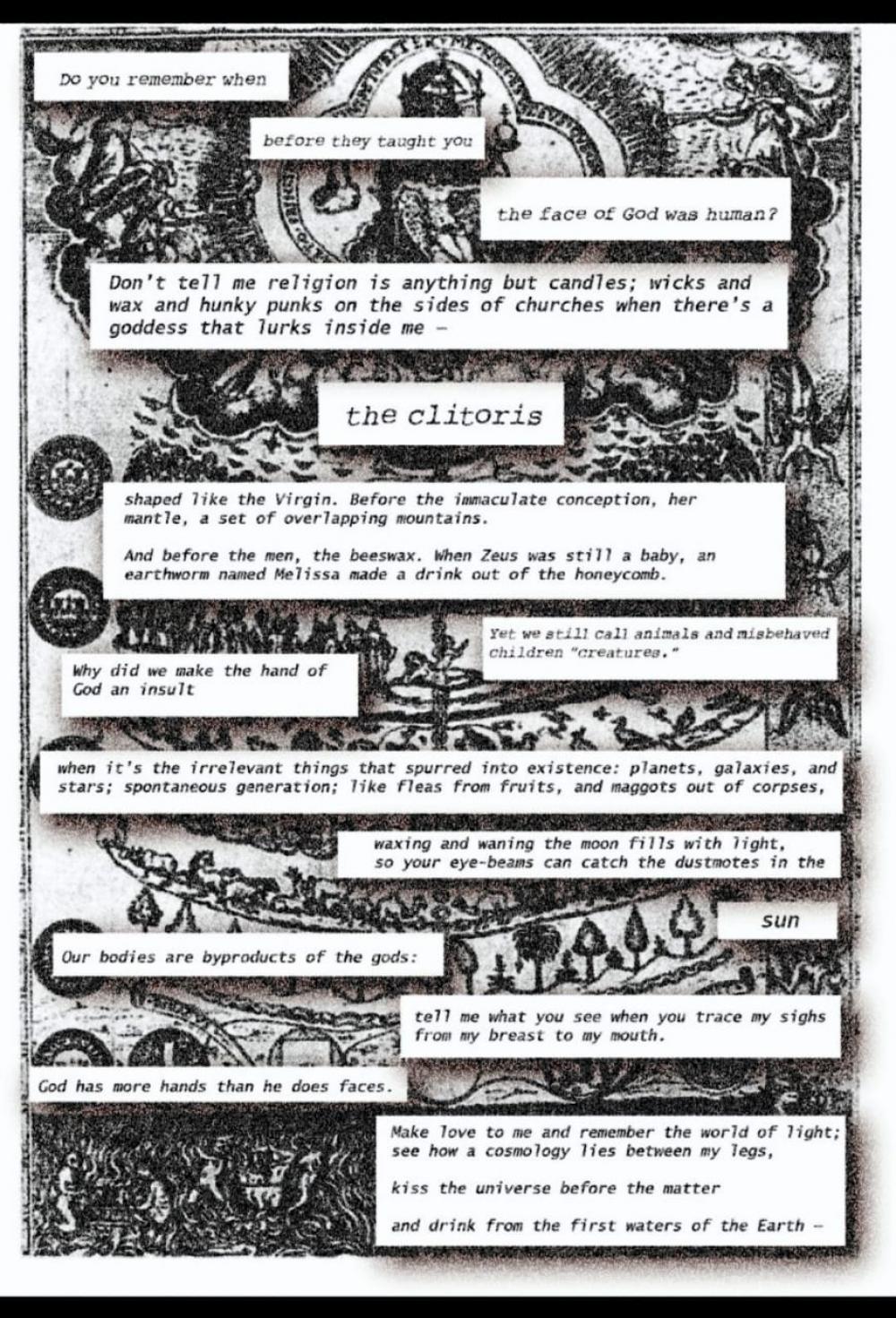
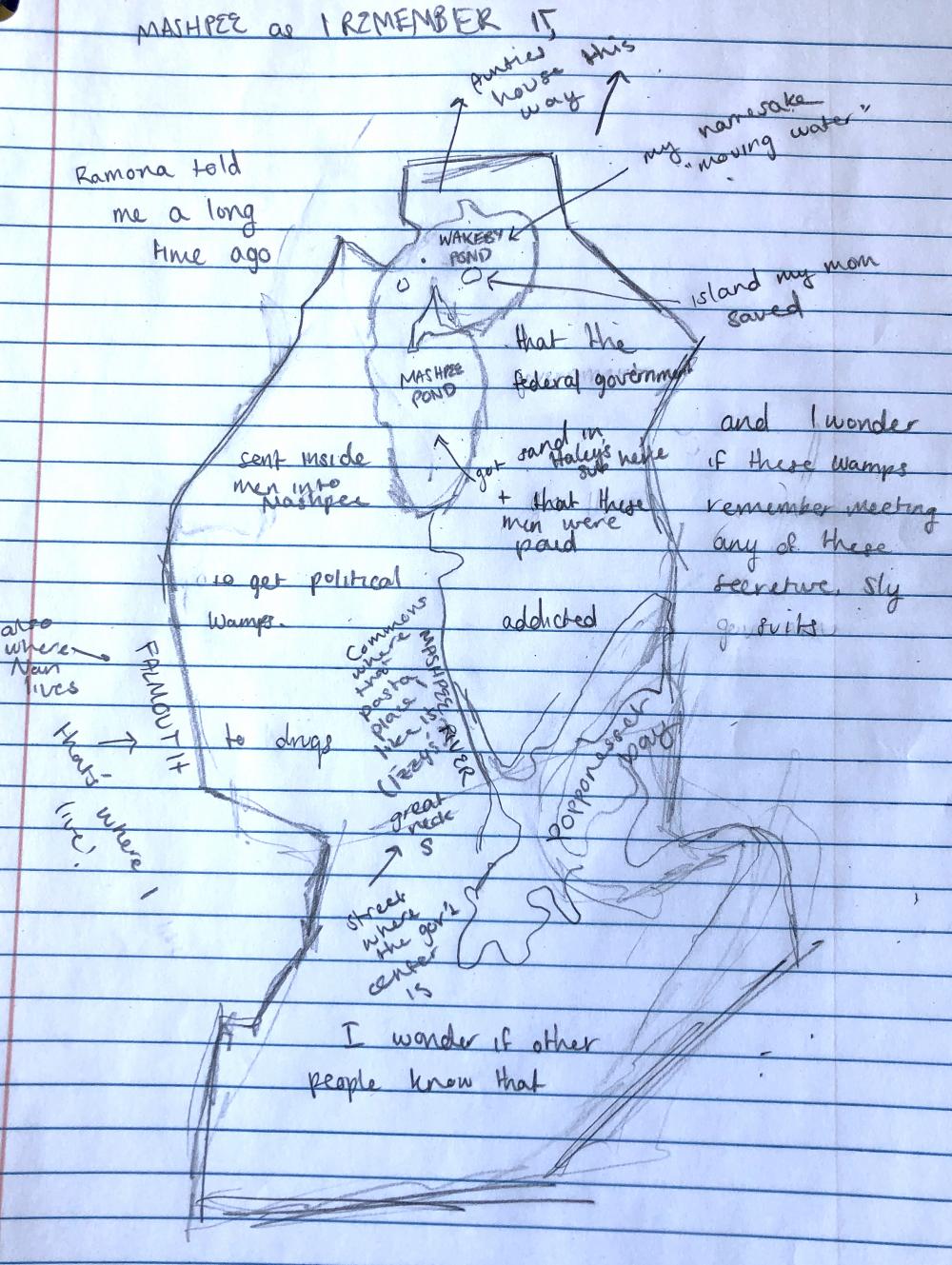
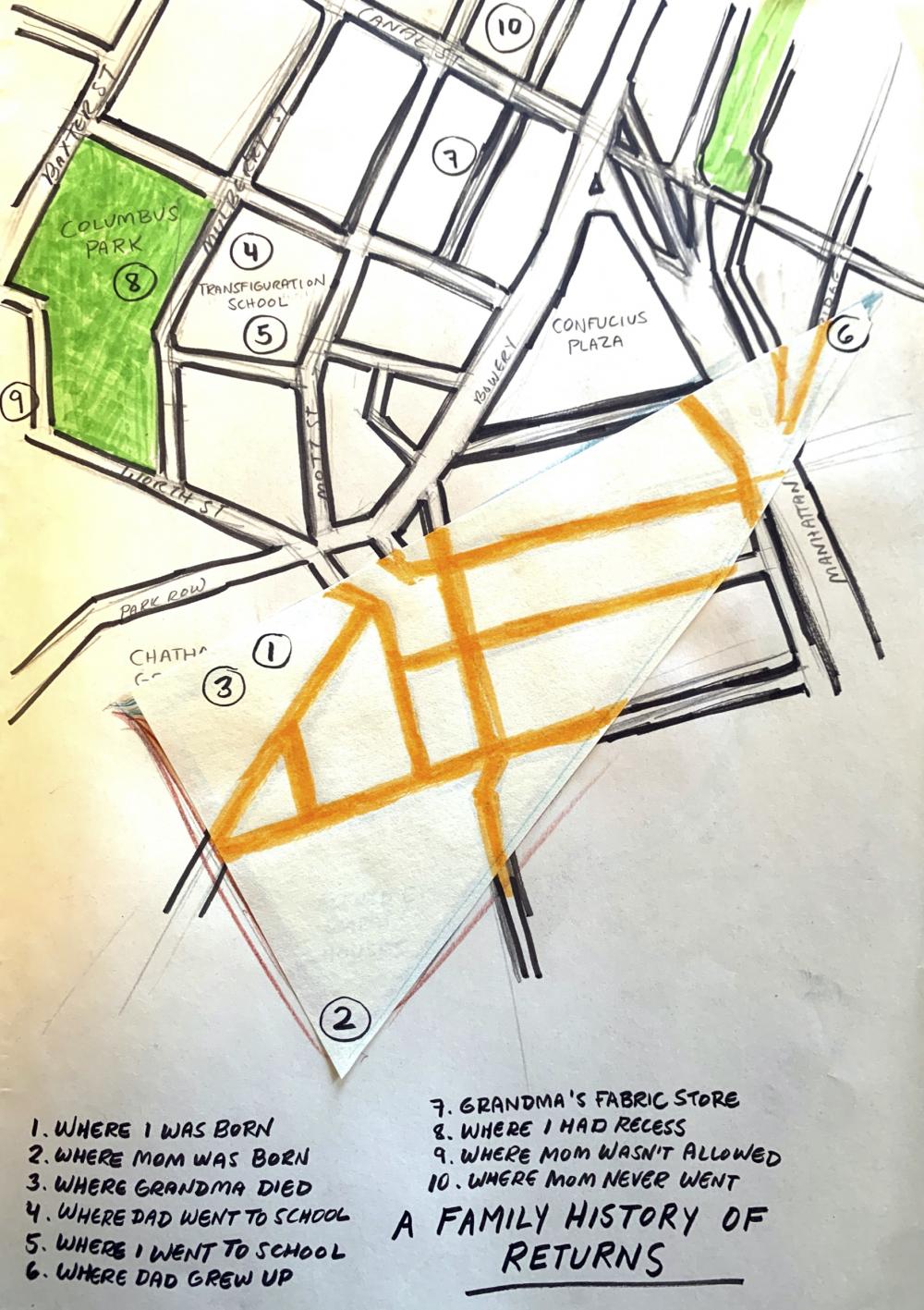
Ale Cabezas '21 Chloe Jonas '21 Alicia Kwok '21
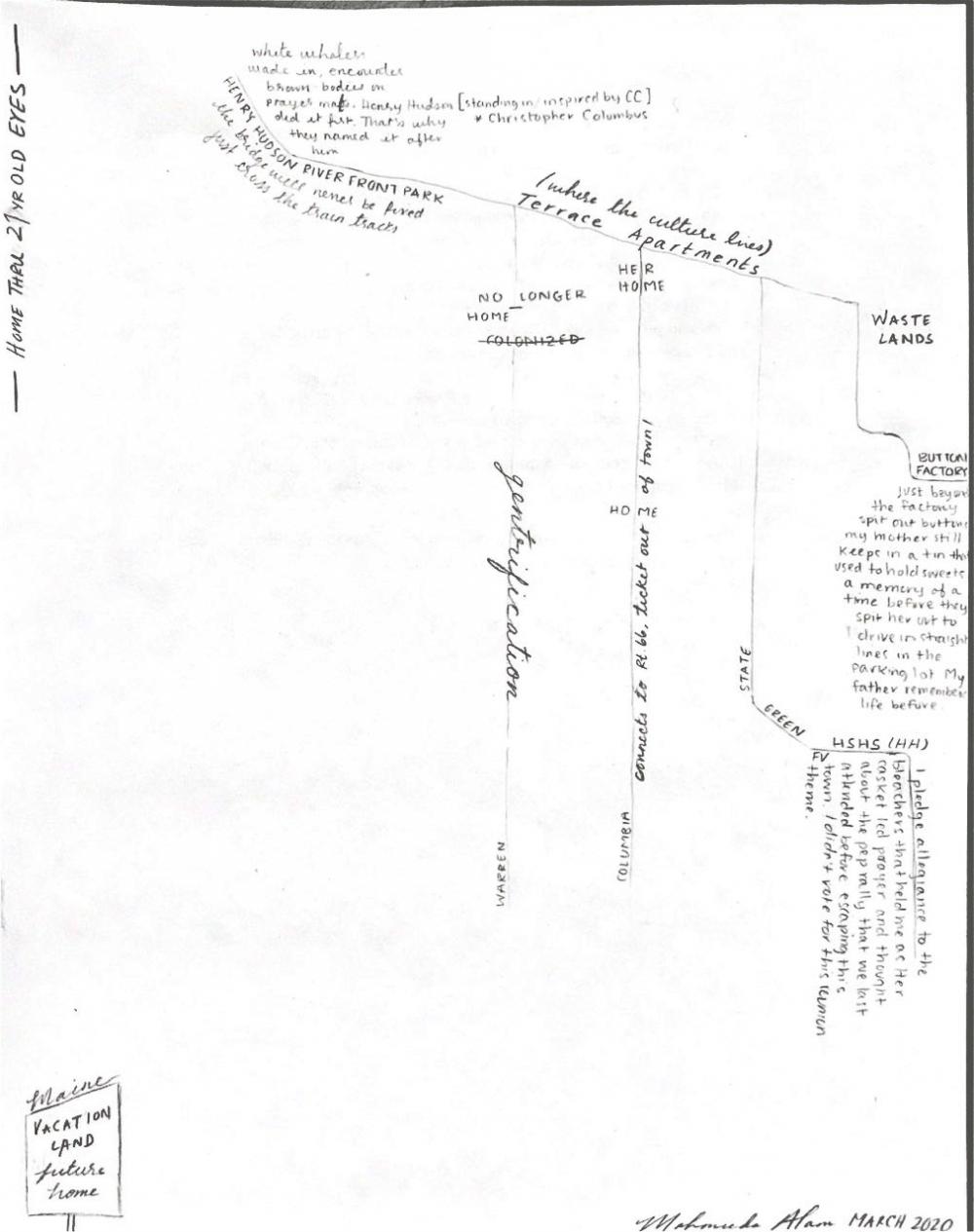
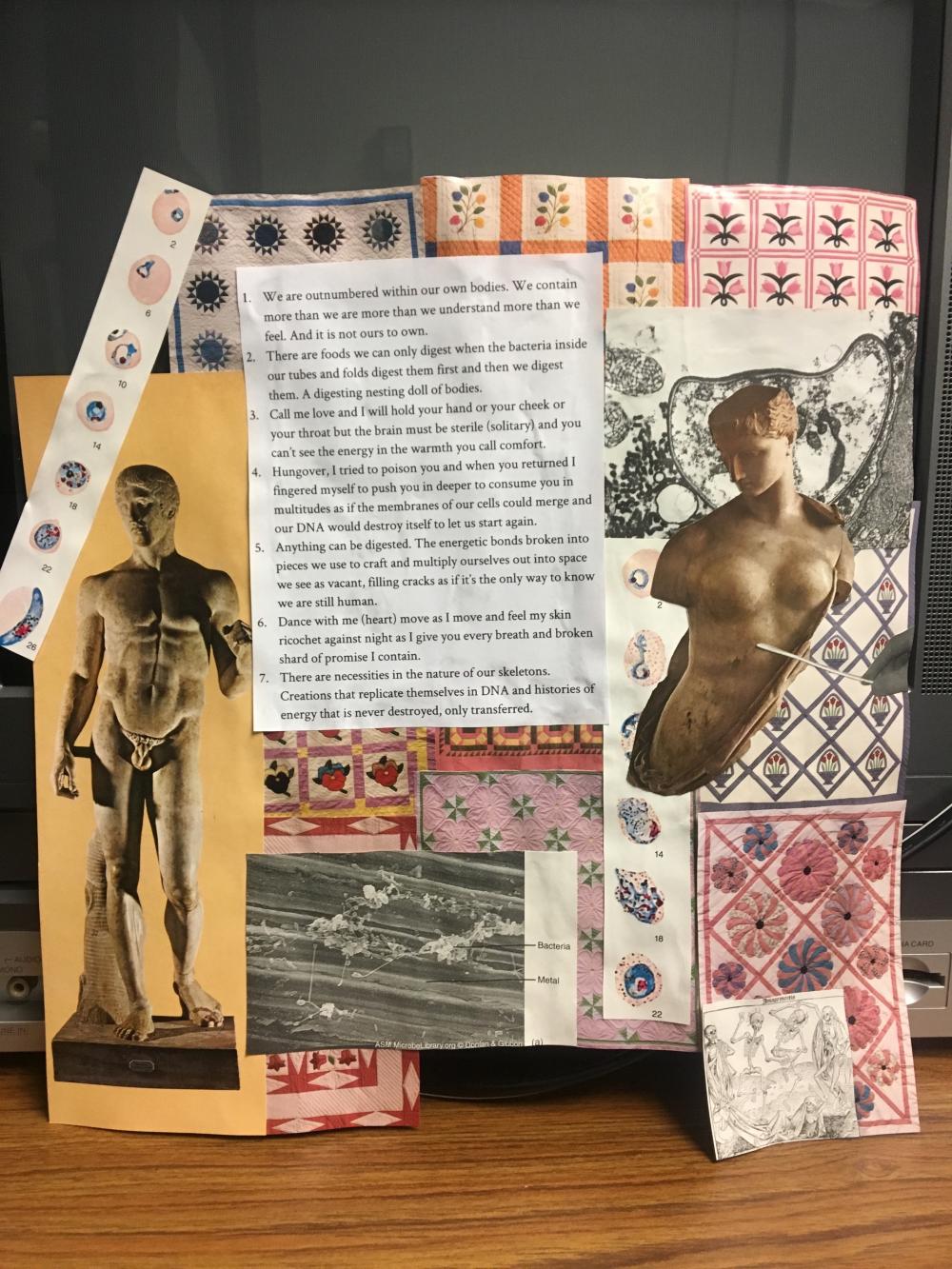
Mahmuda Alam '20 Arden Hegberg '20
Creative Project 6: Quarantine
Finally, during the last few weeks of class, I encouraged students to create work based on their current reality. COVID-19, quarantine, depression, anxiety, connection, and hope all figure greatly in these pieces. Students found extraordinary ways to express the profound disruption to their lives. Using language, collage, and in one case audio, they seek to make sense out of the uncontrollable circumstances we all find ourselves in.
Events And Links
In February 2020, students enrolled in Visiting Lecturer Sam Ace's "Poetry and Image” course had the opportunity to look closely and think analytically about Barton Lidice Benes's AIDS Museum (Reliquarium) at the Mount Holyoke College Art Museum.
Join MHC students, faculty, and staff for an evening of readings and open mic, with a featured reading by Cameron Awkward-Rich.
Co-sponsored with the Department of English

 Give
Give